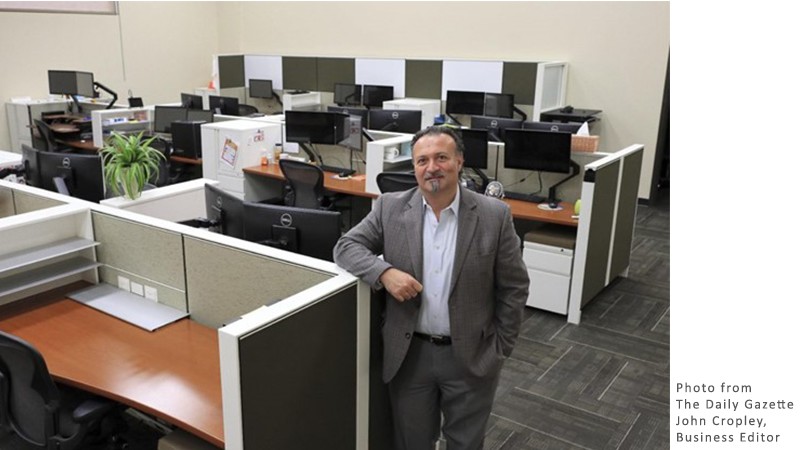Schenectady school bus-routing company has grown workforce 30 percent through pandemic
- Posted By: Robb Snyder
- Category Featured, Company News

From The Daily Gazette
By John Cropley/Business Editor
December 7, 2020
SCHENECTADY — Of all the tech companies operating in the Capital Region, one that specializes in school bus routing software would seem to have some of the worst prospects amid a pandemic that has shut down schools for days, weeks or months at a time.
But Schenectady-based Transfinder has blossomed this year, adding 36 new employees so far in 2020, the bulk of them after the COVID-19 crisis took hold in March and 21 of them in Schenectady. The total workforce as of Monday is 128.
It’s not business as usual, though. The downtown State Street headquarters that’s usually humming with activity and should be buzzing with 21 new employees is all but deserted. The staff has been working remotely for the last nine months.
So while company leadership was scrambling to find new ways to serve customers, sell product, and preserve revenue, they faced the equally challenging and equally important task of keeping a workforce that relied on focused, productive and cohesive collaboration while isolated at home.
President and CEO Antonio Civitella said Transfinder has met the first imperative — 2020 revenue is on track to exceed 2019 by 10 percent. He said it also is succeeding so far on the second.
But unlike many employers now looking at going partly or entirely remote on a long-term basis, he plans to bring everybody back under the same roofs in Schenectady, Shanghai and Austin, Texas.
“Morale is contagious,” Civitella said.
“It’s so hard to be contagious when you’re not face to face,” he added, rearranging and repurposing what will certainly be one of the enduring messages of 2020.
Transfinder’s market niche has been school bus routing software. School districts buy its products and services to run their buses as efficiently as possible, picking up children in the shortest number of miles and minutes possible, saving on fuel, personnel and vehicle maintenance costs as well as getting kids to school faster.
Children stopped going to many American schools last spring, and have been back sporadically this autumn.
What Transfinder was able to do this year is build on the fact that the buses weren’t entirely idle while this happened — they were delivering lunches, homework and technology. They were used as mobile WiFi hotspots in some places, so children in areas without internet service could do their work remotely. There’s talk now in some localities of using them to assist the mass vaccination campaign likely to start in 2021.
All of these functions could benefit from computer assistance, Civitella said.
Meanwhile, Transfinder monitored social media to see what innovative steps were being taken in school districts nationwide, and see which could be adapted for use by the company.
Finally, on a practical level, the company found that school district administrators had more time to take a sales call, or look further into a technology that they had always wanted to research but never had time to.
All this had been done from dozens of people in individual homes.
Civitella recalls watching the situation with top managers in early March, then discussing and preparing all of the second week how to go remote, as it looked like personal health and company function would soon be at risk.
“The fear was, there’s going to be a shutdown, and then you have to be reactive, and being reactive is where you make mistakes,” he said.
The decision was made March 13. Everyone went down a checklist, picked up the stray HDMI cable or whatever else they might need to work from home, then left the building.
“At 12:30 p.m. our last tech support call was [resolved] here,” Civitella said. “At 1:50, the next call that was closed was remote. We made such a celebration — the entire company was able to be dismissed in four hours.”
Moving out was easier than staying out, he recalls. People were working in isolation from each other and having to produce results at a time of national and often personal turmoil. Morale boosting became a key function of the leadership, which started blasting messages of each sale made.
“To keep the employees motivated you’ve got to share their successes,” he said.
Civitella knows he wants to end the remote working arrangement. He knows what the moment will feel like when it’s time to come back — everyone back in the same room and comfortable being there.
But he doesn’t know what turning point the pandemic must hit to make this possible, whether it’s widespread vaccination or something else.
“At this point it’s working,” Civitella said. “What worked well when we were all here is the environment we created. If we can’t collaborate face to face, then [coming back] doesn’t make any sense.”



